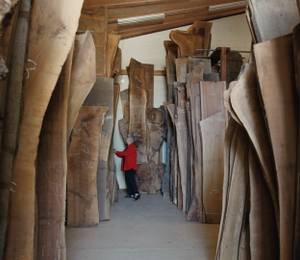In an interview with SEAB, Head of Asia Pacific & India Regions, Danfoss Drives, Krisada Phetsuksiri shares his insights on how the company aims to be a one-stop HVAC solution provider and highlights the opportunities in the HVAC industry post pandemic.
SEAB: Danfoss plans to position itself as a one-stop HVAC solution provider. Could you brief about the range products manufactured by the company to meet the HVAC needs of buildings today which are striving to become energy-efficient?
KRISADA: Our solutions to giving life to better indoor environments with HVAC are based on application knowhow and a comprehensive portfolio of products for heating, ventilation and air-conditioning in commercial buildings. Optimized comfort and energy efficiency in buildings can be achieved with Danfoss solutions ranging from HVAC-dedicated AC drives to valves and actuators for hydronic balancing and the latest oil-free compressor technologies for chiller applications. It is not just energy efficiency in new buildings and modern spaces, Danfoss also works to develop efficient HVAC systems for sealed and hygiene-critical spaces such as hospitals and data centres. Additionally, we provide retrofit solutions that help landmark buildings of the past to achieve the most modern standards.
Deep-diving into our AC drives, we have VLT® HVAC Drive that is designed to bring optimized process control to all HVAC applications. Based on 35 years of experience and innovation, our Drive is fast and cost-effective to commission, and with built-in intelligence which enables the Drive to act as a smart sensor, monitoring the condition and performance of the motor, the application and the entire system. It features a wide range of functions specifically developed for use with, for example, pumps, fans and compressors to save energy, meet environmental regulations and reduce costs in modern buildings.
I am confident to say that through combination of minimizing thermal losses, low standby power consumption and demand-based cooling fan, our VLT® HVAC Drive is capable to operate at 98 percent efficiency. How?
Energy saving heat management
A unique back-channel cooling concept transfers up to 90 percent of heat away from the room, using a fan-less design that exploits heat differentials in materials and air temperature and the latest developments in heat piping technology. This results in large energy savings on air- conditioning.
Energy efficiency harmonic mitigation
The unique VLT® Low Harmonic Drive with integrated Advanced Active Filter delivers energy efficiency that is 2-3 percent better than traditional AC drives with Active Front End technology. Sleep function at low load ensures further energy savings.
Advanced automatic motor adaptation
The VLT® HVAC Drive with automatically adapt to the motor to ensure supremely efficient motor performance, no matter which brand or type of motor technology you choose for your facility. The VVC+ control automatically performs advanced motor data analysis for optimum and highest efficiency control.
Automatic adaptation to application
Around 90 percent of all motors are oversized by more than 10 percent. Automatic Energy Optimizing functionality can deliver energy savings of 2-5 percent over the whole load range.
SEAB: Could you briefly highlight a prominent project in Singapore or Southeast Asia using Danfoss’ intelligent drives and what challenges you had to face and overcome?
KRISADA: Danfoss had the golden opportunity to implement our EC+ solution for the Keppel Bay Tower Technology project – Singapore’s first Green Mark Platinum (Zero Energy) in Commercial Building. The Danfoss EC+ concept allows ventilation system designers to combine our VLT® HVAC Drive with the most efficient fan and permanent magnet (PM) motor to create the most efficient AHU system in a building. This concept can deliver up to 85 percent wire to air efficiency and energy savings of 40-60 percent in AHU.
Keppel Bay Tower originally was already a certified Singapore Green Mark status as Low Energy Building. The aim was to further reduce 20 percent of the building’s energy consumption. Danfoss and NOVENCO combined forces to install high efficiency AHU technology which includes the following components – PM motors, Danfoss VLT® frequency drives, and NOVENCO ZerAx® axial flows fans. The entire retrofitting activity took less than 10 hours to complete. This has resulted in achieving 46.8 percent in energy savings to date.
SEAB: What prospects do you see for the HVAC industry post pandemic?
KRISADA: The opportunity is high no doubt about it. This pandemic has taught us the importance of how ventilation in buildings play a critical role in preventing air-borne viral and bacterial spread in an enclosed environment. In order to ensure good indoor air quality (IAQ) in air-conditioned buildings, it is essential to keep the ventilation systems in good working order. Building owners will now need to evaluate their current HVAC system that are in place and carefully consider this – “Are the systems performing as they should be or are my tenants at risk of unnecessary exposure? Are my tenants safe?” For comfort and safety reasons, latest technologies are definitely available to help improve buildings’ overall indoor air quality.
Additionally, energy efficiency retrofitting of buildings are investments that can support countries in boosting economic growth while creating jobs and fighting climate change. We also see increasing governmental policies and new commercial building standards starting to take place to stress developers and building owners to increase efforts in moving towards greener buildings in line with the sustainability agenda and all these will definitely increase the demand for better, more reliable and improved HVAC systems.















